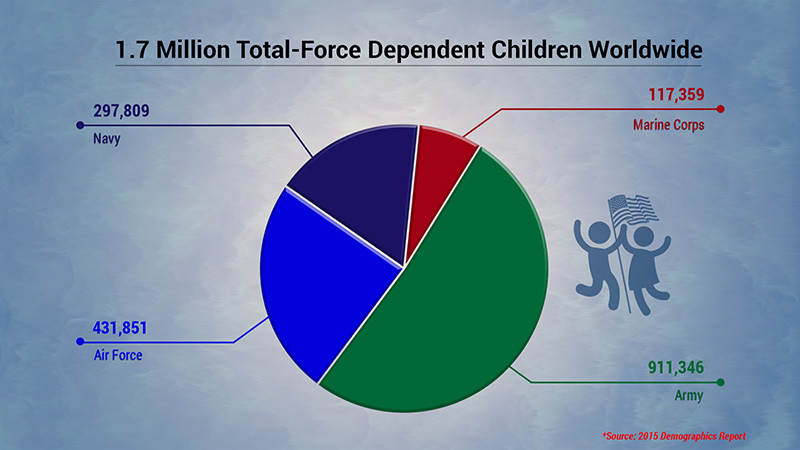 According to the Department of Defense, there are more than 1.7 million military children worldwide. To honor the unique sacrifices of children whose parents serve in the military, each April is designated as the Month of the Military Child.
According to the Department of Defense, there are more than 1.7 million military children worldwide. To honor the unique sacrifices of children whose parents serve in the military, each April is designated as the Month of the Military Child.
Here are some ways you can show your support for military families and military children:
- Read books about military kid’s experiences, military lifestyles, or appreciating the differences in each other.
- Create a Hero Wall to honor those in public service – it could be family members or family friends currently serving, veterans, or community members.
- Write letters or draw pictures and send to deployed family members, friends, and community members.
- Purple Up! for Military Kids in April.
- Participate in community events and activities that support military families.
Additional resources:
https://dod.defense.gov/News/Special-Reports/0417_militarychild/





 Research has shown that engaging in physical activity can be beneficial for all human beings. It can reduce heart disease, combat obesity in children and adults, control blood glucose levels (Riddell et al., 2016), and enable one’s body to release hormone groupings called endorphins, which allow people to feel good and happy. As mental health issues continue to rise in the United States, especially among American youth (Mental Health America, 2019), participating in physical activities that release endorphins may help to alleviate some depressive feelings; however, there are many more cognitive benefits to physical activity.
Research has shown that engaging in physical activity can be beneficial for all human beings. It can reduce heart disease, combat obesity in children and adults, control blood glucose levels (Riddell et al., 2016), and enable one’s body to release hormone groupings called endorphins, which allow people to feel good and happy. As mental health issues continue to rise in the United States, especially among American youth (Mental Health America, 2019), participating in physical activities that release endorphins may help to alleviate some depressive feelings; however, there are many more cognitive benefits to physical activity.